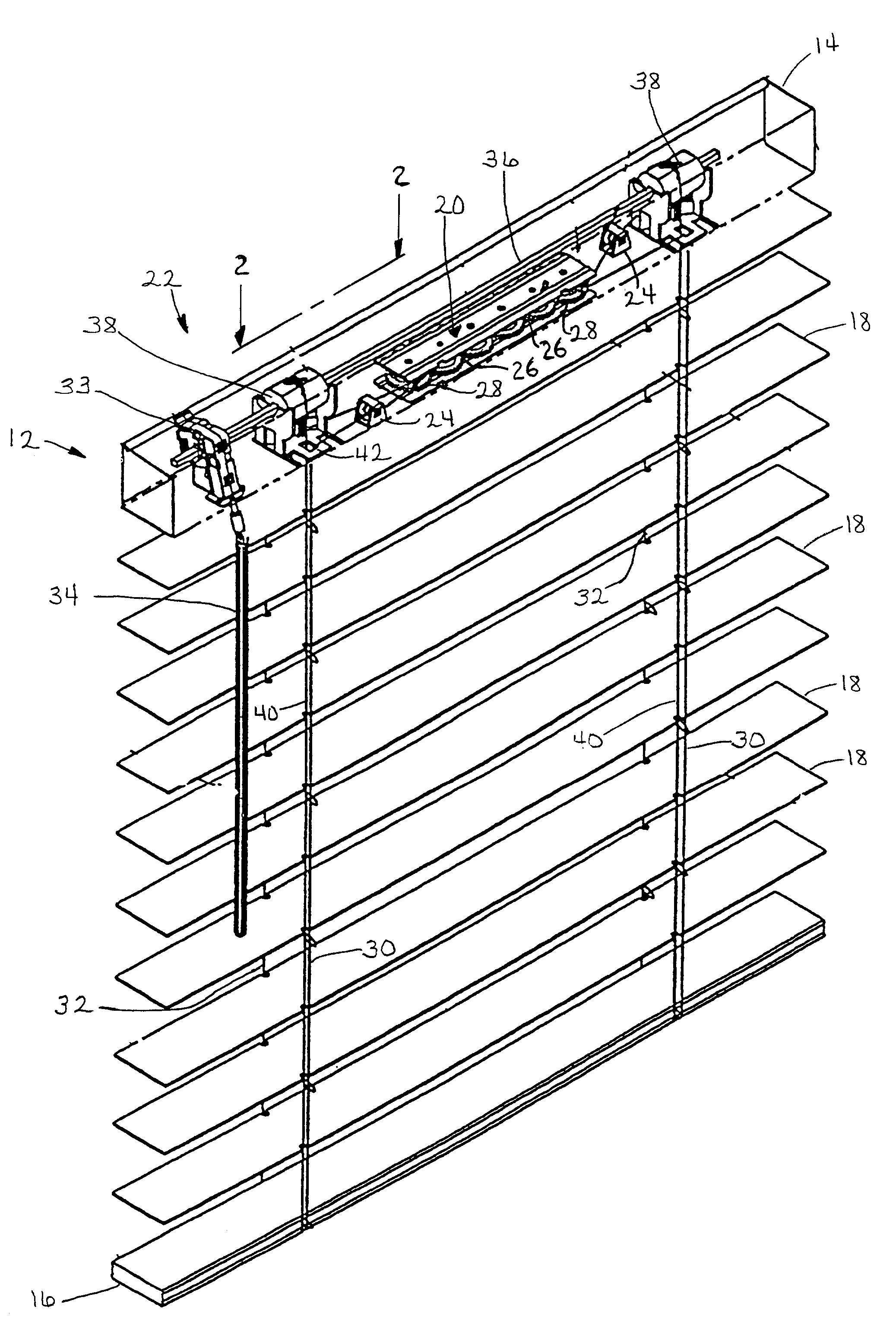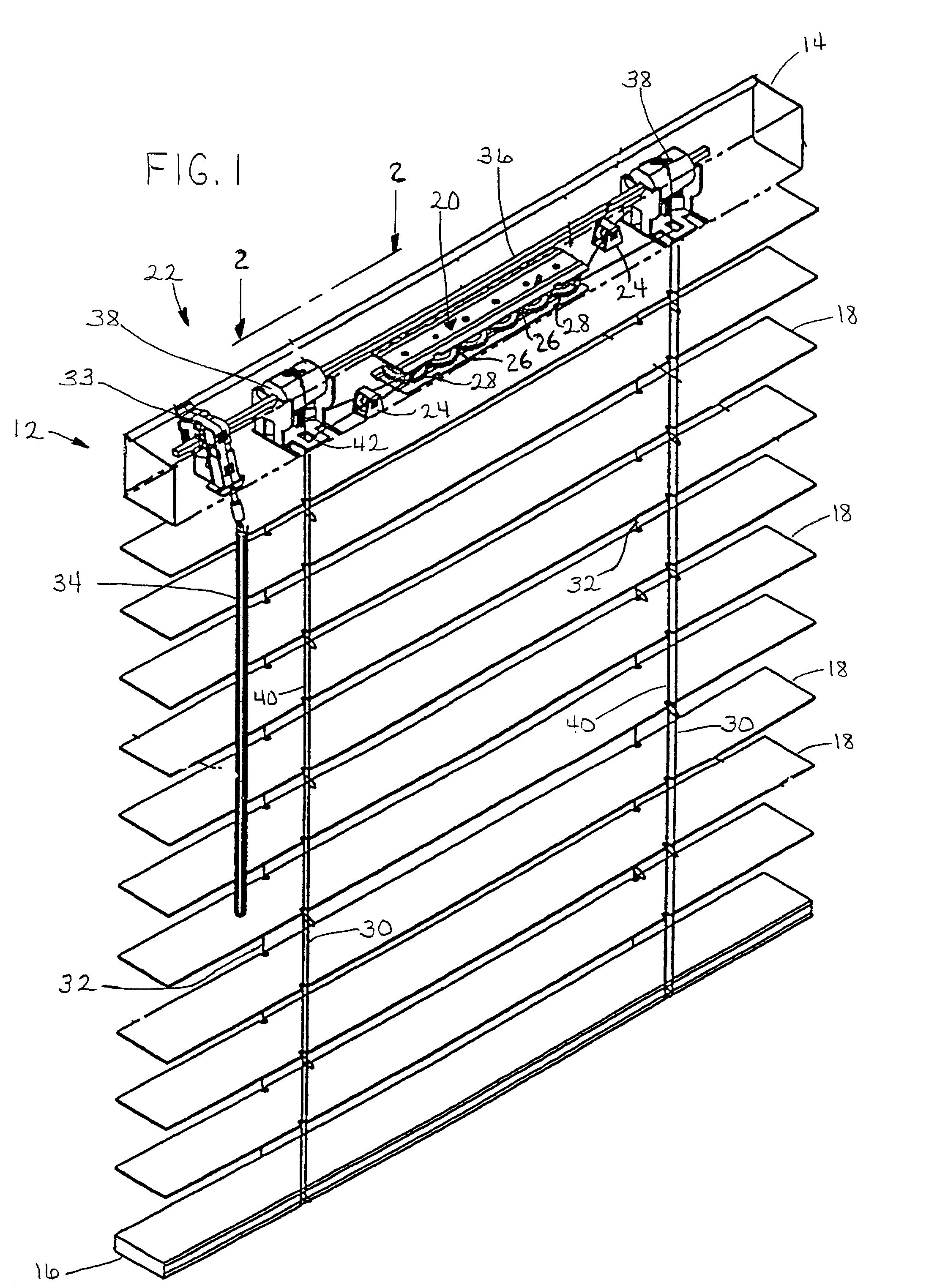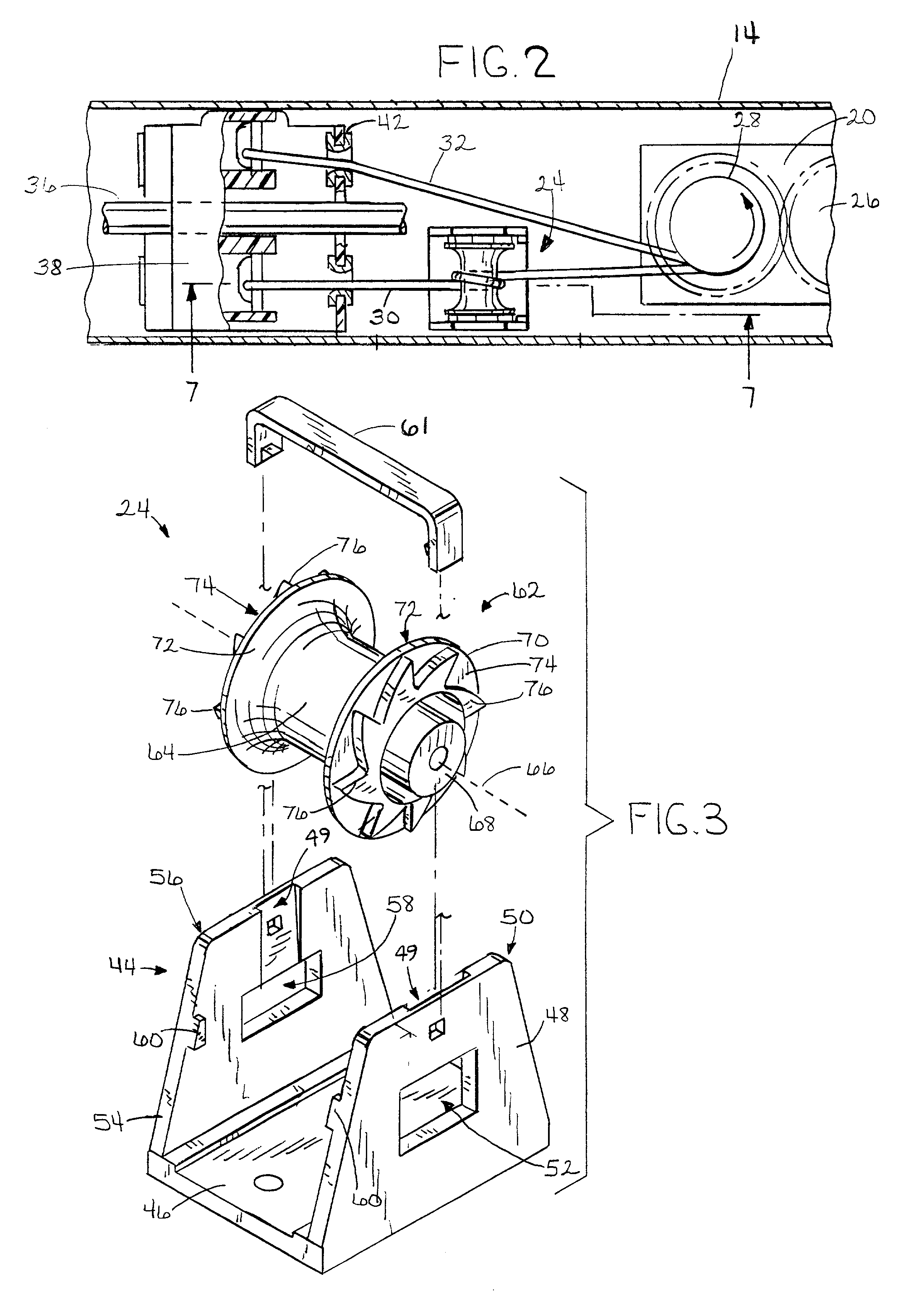One-way tensioning mechanism for cordless blind
a cordless blind and tensioning mechanism technology, applied in the field of window furnishing, can solve the problems of excessive spring force, low spring force and weight of the bottom rail and accumulated window coverings, and the danger of small children or pets
- Summary
- Abstract
- Description
- Claims
- Application Information
AI Technical Summary
Problems solved by technology
Method used
Image
Examples
Embodiment Construction
[0028]The exemplary embodiments shown in the Figures relate generally to the art of a one-way tensioning mechanism, including window coverings such as venetian blinds and window shades. More specifically, the present exemplary embodiments relate to a one-way tensioning mechanism to attain one or more desired performance characteristics.
[0029]Performance characteristics of a blind may include the effort necessary to raise or lower the bottom rail, the speed of which the bottom rail may be raised or lowered, and whether the bottom rail remains in a static position relative to the head rail when released (i.e., “balanced”). Movement of the bottom rail after it is released is referred to as “creep”. The performance characteristics of the blinds and drive actuators shown in the Figures may depend on the customers preferences, and may be variable, selectable, and adjustable by a retail sales associate, the installer, and / or the customer.
[0030]As shown in the Figures, the blind is configur...
PUM
 Login to View More
Login to View More Abstract
Description
Claims
Application Information
 Login to View More
Login to View More - R&D
- Intellectual Property
- Life Sciences
- Materials
- Tech Scout
- Unparalleled Data Quality
- Higher Quality Content
- 60% Fewer Hallucinations
Browse by: Latest US Patents, China's latest patents, Technical Efficacy Thesaurus, Application Domain, Technology Topic, Popular Technical Reports.
© 2025 PatSnap. All rights reserved.Legal|Privacy policy|Modern Slavery Act Transparency Statement|Sitemap|About US| Contact US: help@patsnap.com



